Strategic landscape of South Asia-Pahalgam conflict
Indian leadership’s strategic thinking and offensive policies are endangering the stability and peace in South Asia
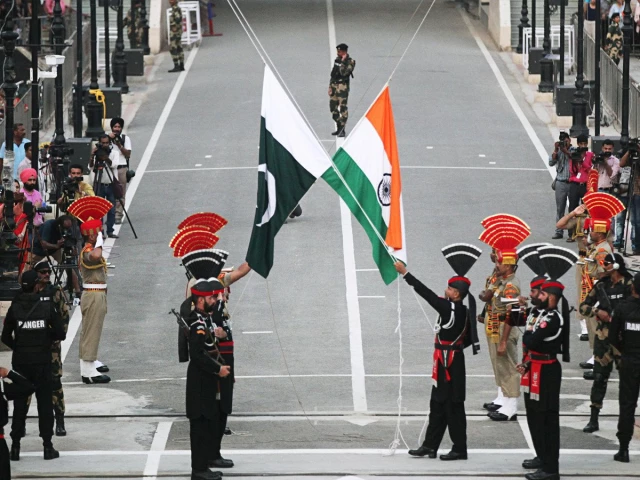
Strategic landscape of South Asia is mainly defined by the balance of power equation of two nuclear states India-Pakistan. The conflictual relationship of India with other states is also becoming a perpetual driver of evolving security dynamics of South Asia.
Unlike other regions where shared prosperity and cooperative frame work is a priority, in South Asia, India the bigger state follows a hegemonic and zero sum approach in the region. Indian strategic approach is based on establishing political and military domination in the region that seriously clashes with other regional states’ strategic approach of economic integration, connectivity and peaceful co-existence.
This approach is also manifested by India in its disputes resolution with its neighbours. Kashmir remains the major dispute which Pakistan wants to resolve based on UNSC resolutions while India thinks it can manage militarily within occupied Jammu & Kashmir and beyond its borders by military coercion.
South Asia is also witnessing state of India’s changing character into more of a theological state which now prefers to call itself Bharat - Hindu Rashtra (India for Hindus only). Indian political leadership led by BJP having Hindutva driven political aspirations with revisionist strategic thinking is becoming a real challenge to stability and peace in South Asia.
South Asian proximity to Asia-Pacific and Middle East regions and Afghanistan adds more complexity to regional strategic dynamics. In Asia-Pacific, major powers’ rivalry and strategic competition allowed India to exploit its relevance to US strategic interest that has its impact on strategic stability in South Asia.
Ongoing conflicts in Middle East complicates the South Asian security paradigm which will have impact in shaping future security approaches of the states. India is fully exploiting the unstable dynamics of Afghanistan by supporting terrorists groups like TTP and BLA against Pakistan to add to the security challenges in South Asia.
These strategic realities make South Asian strategic landscape complex and evolving. Therefore, to evaluate the emerging contours of South Asian Strategic landscape, trends of global geo-political and geo-strategic environment have also to be carefully studied.
Global Geo-Strategic Trends
World is witnessing the emergence of multiple centres of economic & military powers in multipolar global setting, driven by strategic interests of major powers. Recalibration of the balance of power with an emphasis on issue based partnerships, is on the horizon.
Collapse of international order where military power is becoming the currency of interstate relations. Genocide of Palestinians by Israel with no impact of political and diplomatic effort by the international community to stop Israel from the heinous war crimes against humanity, explains it all.
This emboldened Israel to launch a military aggression against Iran, having no regard for UN Charter and International laws. Attack on Iran’s nuclear facilities under IAEA safeguards is unprecedented with ramifications for the credibility of Nuclear Proliferation Regime and efficacy of IAEA and UN.
Pakistan strongly condemned this military aggression and stood on the right side of international legal order while India remain muted at best. Emerging role of China and Russia as more credible major powers, is now becoming increasingly significant to bring some stability and order in the regional conflicts.
The global nuclear order also faces multidimensional challenges due to these rising major powers’ rivalries. We have seen the collapse of foundational arms control agreements. While simultaneously, major powers are not only modernizing their nuclear arsenals but also integrating disruptive military technologies such as hypersonic missiles, AI-enabled drones, cyber capabilities, and anti-satellite (ASAT) weapons.
World is living in an era of rising missile saturation threats and AI guided strike systems. This is becoming the key capability for a decisive role in contemporary and future military conflicts. These technologies blur the line between conventional and nuclear warfare, increasing the risk of miscalculation and unintended escalation.
Looking at these developments in contemporary global strategic environment and military conflicts, some serious questions are raised:-
First
With diminishing role of Diplomacy and International Political Institutions to resolve conflicts and to end the military conflicts - How will it impact the military strategies and conduct of future military conflicts?
Second
In the evolving strategic environment - Is it military strength and strong military response that will force the adversaries to end the conflict?
Third
How will these realities impact the security paradigms of the regions in future and more importantly the adverse impact on strategic stability of the regions?
Impact of Major Developments in Geo-Strategic Environment on South Asia
These developments in the strategic environment around us and related questions about future security strategies have significant impact on South Asian security paradigm. There are Four Major outcomes, of contemporary global strategic environment, that has significantly impacted the strategic landscape of South Asia.
Consequently, this has also influenced Indian leadership’s strategic thinking & behaviour, endangering the stability and peace in South Asia. First, the recent military conflict of Pahalgam besides other contributing factors also needs to be seen in this backdrop.
The first major outcome is that, in Indo-Pacific balance of power struggle, India presented itself as Net Security Provider to exploit this geo political competition. The US and Western powers did not dig deep into the actual political motives and capacity of India, rather were too quick to grant India a status for their own strategic interest to contain China.
This however, gave India a false sense of hegemon in the region. Second outcome relates to deteriorating Multilateralism and major powers preference of strategic domination over strategic stability, with issue based partnerships that has encouraged ambitious states like India to dominate the region and beyond militarily.
Third outcome relates to the support of US and Western Countries that allowed India to accumulate military hardware. Resultantly, India now is running the fastest growing nuclear and missile programme. This has been done with no regard and concern to arms control and strategic stability in our region.
This vertical proliferation combined with offensive military doctrines of India, had made Indian strategic community to think that they can apply military power to coerce Pakistan and achieve a military victory over another nuclear power.
Fourth outcome is about the policy of appeasement by US and West that made India to think that its Exceptionalism will always be acceptable to the world. Indian propaganda and disinformation campaign was accepted without scrutiny and responsibility, by Western policy makers including Western media, to support Indian narrative.
No questions asked to India about its HR violations in Kashmir and in many other states, where state institutions and Hindu extremists are conducting heinous crimes against minorities as a state policy. Indian history of false flag operations is now known to world after the facts have come to light, but India has been let go off its policy of deceit and disinformation.
This emboldened India to continue with its false flag operations to justify unprovoked military aggression and establish its military dominance in the region.
Emerging Character of India into a Hindu State-Bharat
This global strategic environment that has directly impacted the Indian Strategic thinking as have been explained, the real challenge, to peace and stability in South Asian region today, is the emergence of an Abnormal State of Bharat on the strategic landscape of South Asia.
To develop the true insight into strategic stability paradigm of South Asia one will have to dig deep to understand how the character of Indian state is evolving with the ideological beliefs of BJP leaders. World powers and West need to critically evaluate the emerging strategic behaviour of India without any prejudice and bias.
Moreover, strands of strategic abnormality of biggest state of South Asia now known as Bharat - Hindu Rashtra (A state for Hindus only), at the core of India’s ideological beliefs and strategic thinking there are three fundamental principles - Revisionism - Violence and Deceit.
Indian political leadership of BJP is a political extension of RSS who’s founding Gru Sarvarkar, professed India for Hindus only and violence as the key policy to establish Hindu state in whole of South Asia called Maha Bharat.
This ideology and revisionist concept of RSS is now the political agenda of BJP. Likewise, an abnormal strategic behaviour of Bharat leadership is their belief in violence driven politics. Use of military power to suppress Kashmir freedom struggle in Indian occupied Jammu and Kashmir, and then to coerce its neighbours not only to threaten but to apply military power with impunity is what Indian Prime Minister Narendra Modi wants to project in South Asia.
Such violence driven strategic thinking of a nuclear state against another nuclear state can only be of undesirable consequences for the region and beyond. India has mastered itself to sponsor terrorist acts in its neighbouring states. This is part of their mythological belief (based on Chanakya Kautalya’s philosophy of state craft) of using violence in neighbouring states to weaken them and to make Bharat a Maha Shakti.
This divine belief is manifested by Indian State’s support to terrorists in Balochistan - TTP and world also witnessed, the Indian state officials planning and executing terrorist acts in Pakistan and around the world like in Canada and US. More recently Indian intelligence network in Iran has also been exposed.
Similarly, it is very alarming to note that India is no longer a restrained, doctrine bound, rational nuclear state many in the West still imagine. South Asia is watching transformation of a Nuclear Power India into a Theological state (Bharat) where escalation is not an option of last resort but a divine right to pursue the ideology of divine destiny of (Greater India) Maha Bharat.
Therefore, the abnormal state of India, believes in and has mastered the art of falsehood. Deceitfulness is a core value of their strategic culture. World now knows how India kept projecting false narratives through information Labs, holly wood style theatrical media etc.
India is now at its best in disinformation operations. To sum up, what is most dangerous about this abnormal state of India, is its strategic thought process that is now hostage to a dangerous combine of extremist religious Hindu Nationalism and delusional exceptionalism.
Pahalgam Conflict
The international community is witnessing the Indian State’s abnormal strategic thinking and geo-strategic realities at play. On 22 April 2025 at Pahalgam, the undesirable incident takes place before any response by the law enforcing agencies and without any evidence whole Indian state machinery including media started to threaten another nuclear state i.e. Pakistan and created a hysteria of war.
It started to happen as if everything was scripted, without any mood to responsibly and rationally address the crisis. PM Modi was very quick to hold in Abeyance Indus Water Treaty (IWT) as if this incident was planned to give him a reason to do that.
Like previous history of India that any anti-India violence must be alleged to Pakistan, a narrative aggressively promoted by New Dehli and echoed by Western media, India thought it now has the immunity from scrutiny of its false claims by international players.
India in this crisis also thought that its strategic behaviour of exceptionalism and unilateralism is granted by the Devine right and will be supported by the major powers and the Western world without asking any Questions. What followed next is now known to the whole world.
Furthermore, it is highly significant to evaluate the strategic conduct of two Nuclear States of South Asia during Pahalgam conflict that will allow us to draw important conclusions to understand the strategic landscape of South Asia.
Indian Irresponsible Behavior
India launched an unprovoked aggression without furnishing any credible evidence, let alone allowing an independent investigation. A deliberate and provocative breach of sovereignty designed to provoke response from another Nuclear State.
Alongside this aggression India also coordinated and executed through its proxies in Balochistan & TTP to launch terror attacks in Pakistan. A nuclear state of India provoking another Nuclear State in conventional and sub conventional domain.
Instead of de-escalating, created war hysteria and wanted to project its military power (escalation domination) with no restraint till a strong conventional response by Pakistan. Driven by political and military overconfidence, India miscalculated Pakistan‘s resolve to defend and our conventional strength.
India appeared to employ a newly formulated offensive doctrine called dynamic response strategy (DRS). Another failed attempt to find space for applying conventional military capability to coerce its neighbours, dangerously planning under the nuclear deterrence equation. India took a unilateral decision to hold in abeyance the IWT with total disregard to international laws, norms and treaty obligations.
This Indian strategy of Hydropolitical coercion is unprecedented and has the potential to risk South Asia to a military conflict of undesired consequences. Prime Minister Modi himself and the senior political and military leadership publicly made highly irresponsible statements like calling Pakistan’s nuclear capability a Nuclear Bluff and threatening fragmentation of Pakistan, another nuclear power.
Such irresponsible strategic behaviour during a crisis by a nuclear power leadership dangerously projects their abnormal strategic thinking. Surely this has not gone unnoticed by the world.
Pakistan’s Well Measured Response
Pakistan throughout the crisis acted with restraint, discipline, responsibility and was resolute to defend itself. Pakistan did not retaliate but responded. Exercising its right to self-defence under UN charter.
Pakistan launched Operation ‘Bunyan um Marsoos’ - a calibrated, precise (military targets only) and a clear conventional response according to its Policy of Quid Pro Quo plus. The country displayed its focused and integrated conventional operational strategy with coherent kill chain ability.
Pakistan thwarted India’s attempt of ‘Escalation Domination’ and exposed its operational weaknesses which forced India to reach out to global powers for a cease fire. Pakistan as a responsible nuclear power accepted the ceasefire for peace and stability in region.
Strategic Reality of South Asia - Post Pahalgam Conflict – Analytical View
Following Pahalgam conflict, strategic reality of South Asia vis-à-vis its three time bigger enemy India has been reinforced in a following manner:-
- Indian myth of conventional military superiority, its irrational and irresponsible strategic behaviour and its role as perpetrator of false narratives have been fully exposed.
- Indian status of Net Security provider in Asia Pacific now has serious question marks for its false image created.
- Pakistan came out of this conflict leaving no ambiguity of its resolve to defend and with a strong response to any military aggression. PAF operational superiority further reinforced and Pakistan again established as a responsible Nuclear Power of the Region.
- Kashmir dispute re-emphasized as Nuclear Flashpoint of South Asia to international community.
- Pakistan - China Strategic relationship further reinforced.
Major Conclusions
Post Pahalgam conflict suggests that India tried to escalate the conflict both vertically by employing new categories of weapons and horizontally by extending the conflict geographically to establish its military superiority through escalation domination but failed due to strong conventional response by Pakistan.
This exposes Indian strategic thinking which rejects deterrence stability and relies on escalation, disinformation and spectacle to influence domestic and global views. Consequently Post-Pahalgam, the threshold of an escalatory war has come dangerously low, implying very high risks in any future conflict.
In parallel, international community needs to understand that escalation control and escalation domination are too dangerous notions which cannot be ensured in a military conflict between two nuclear states.
If Pakistan after a serious blow to Indian military, had not shown restraint and agreed to the cease fire, the Pahalgam conflict could have escalated to undesirable consequences. This amply demonstrates the potential risks of such misplaced notions.
It is very difficult to understand that, how thresholds of nuclear states come to play during military conflicts, therefore, cannot be predicted with any surety. Any military aggression with the theatrical play of rhetorics by leadership can lead to miscalculation which can be consequential. The whole debate underscores that there is no space for even limited war between two nuclear states is once again established.
Pakistan’s concept of Full Spectrum Deterrence within the precincts of credible minimum deterrence, and conventional operational readiness, was reaffirmed as the central pillar preventing war escalation and maintaining strategic balance in South Asia.
Therefore, it is well understood by all rational minds and is reinforced again that between two Nuclear States military misadventurism is highly dangerous and can achieve no politico-military objectives. RSS’ theologically inspired BJP leadership should now know, that it can’t dictate illegal and unjustified terms through military aggression to another Nuclear Power.
The Pahalgam crisis once again exposed the fragility of regional crisis stability. In the absence of any arms control agreement, and desired Confidence Building Measures (CBMs), crisis management mechanism was lacking and highlighted the significant role of international mediation.
Hence, bilateralism has never worked in South Asian strategic environment with core dispute of Kashmir still unresolved. Hence a serious involvement of major powers in South Asia for conflict resolution now demands urgency for stability of South Asia. Constructive role of US and other friendly countries in recent cease fire effort should be acknowledged and encouraged for conflict resolution in South Asia.
Way Forward
In order to ensure stability in South Asia, Pakistan should continue to re-enforce its operational policy of Quid Pro Quo plus, as the future conflicts may be more intense and compressed in timeframe.
The message to India should be very clear that Pakistan stands ready to meet any Indian aggression at every escalation level with a strong response and resolve. Indian narrative of terrorism by alleging Pakistan for any anti-India violence must be exposed to international scrutiny and Pakistan should now ask International community to investigate Indian state sponsored terrorism in Pakistan and around the world.
It is important to expose false Indian narrative through an intense political and diplomatic effort, before India ventures into another strategic blunder that endangers this region and beyond. Pakistan as a responsible Nuclear state should renew its offer of earlier CBMs and strategic restraint regime to India which should now be seriously considered by Bharat‘s leadership if some sanity prevails.
This is very essential for developing a reliable crisis management mechanism in South Asia. Pakistan remains a strategic balancer in the region with a vital geo-strategic location, a very resilient and vibrant society, a robust system of Armed Forces and a well established strategic capability.
Pakistan has always been playing a very responsible role for the strategic stability and peace in South Asia. Its time that India should give up its political and security policies divorced from rational and responsible state behaviour. Lasting peace could only be achieved through dialogue, political maturity and with the concept of equality and shared prosperity.
Political resolution of all disputes including Kashmir issue as per UNSC resolutions should be a priority. This will require India to give up Hindutva infused strategic discourse. Lastly the saner voices in India and beyond should ensure that PM Modi is not allowed to keep hostage the prosperity of more than 2 Billion people of South Asia to its hegemonic and extremist Hindutva aspirations.

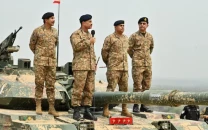
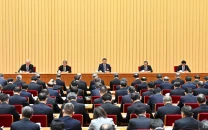



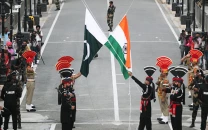





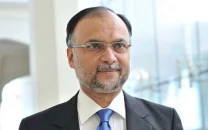
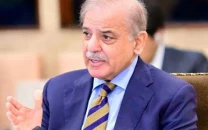






COMMENTS
Comments are moderated and generally will be posted if they are on-topic and not abusive.
For more information, please see our Comments FAQ